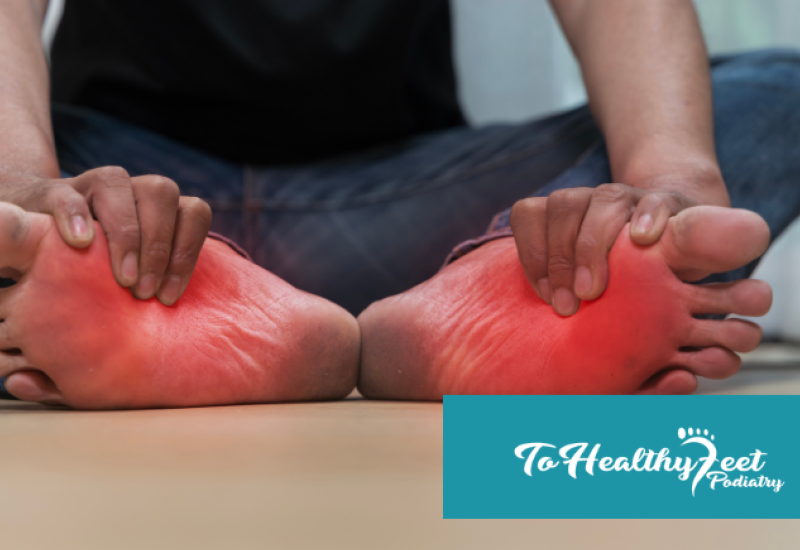Morton's Neuroma, often described as feeling like standing on a pebble, involves a thickening of the tissue around one of the nerves leading to your toes. This condition can cause sharp, burning pain in the ball of your foot. The discomfort may also extend to your toes, affecting your ability to walk and engage in activities. As a condition that significantly impacts quality of life, identifying the symptoms early and understanding the causes and diagnosis process is crucial for effective management and treatment.
At the forefront of foot health awareness, our mission is to provide clear, accessible information about conditions like Morton's Neuroma. Recognizing the importance of early detection and intervention, we aim to empower individuals with the knowledge to seek timely professional care. This article serves as a resource for anyone looking to understand the nuances of Morton's Neuroma, from its initial symptoms to the comprehensive diagnostic approach taken by healthcare professionals.
Identifying Symptoms
Morton's Neuroma typically manifests through a range of symptoms that develop gradually. The most common include:
- Pain and Discomfort: A sharp, burning pain in the ball of your foot that may radiate to the toes.
- Numbness or Tingling: Often felt in the affected toes, similar to the sensation of a foot "falling asleep."
- Feeling of Standing on a Pebble: Many describe it as walking on a small object or fold in their sock.
- Increased Pain with Activity: Symptoms may intensify during walking, running, or when pressure is applied to the area.
Exploring Potential Causes
The exact cause of Morton's Neuroma remains under debate, but several factors are thought to contribute to its development:
- Tight or Ill-fitting Footwear: Shoes that constrict the toes or high heels that force the foot into an unnatural position can exacerbate the condition.
- High-impact Activities: Sports that involve running or jumping can place repetitive stress on the foot, leading to nerve damage over time.
- Foot Deformities: People with bunions, hammertoes, high arches, or flat feet are at a higher risk.
- Previous Foot Trauma: Injuries to the foot may lead to the formation of Morton's Neuroma as part of the healing process.
Navigating the Diagnostic Process
Diagnosing Morton's Neuroma involves a comprehensive evaluation by a healthcare professional. The process typically includes:
- Physical Examination: Palpating the foot to identify tender spots or a mass between the toes. Manipulating the foot and toes can also replicate symptoms, aiding diagnosis.
- Ultrasound: This imaging test helps visualize the thickened nerve tissue, confirming the presence of a neuroma.
- MRI: Although not always necessary, an MRI can provide detailed images of the foot's internal structures, ruling out other conditions.
Understanding the Importance of Early Diagnosis
Early diagnosis is pivotal in managing Morton's Neuroma effectively. When left untreated, symptoms can worsen, leading to persistent pain and limited mobility. Identifying the condition early allows for a broader range of treatment options, from conservative methods like custom orthotics and physical therapy to more advanced interventions if necessary.
Morton's Neuroma is a complex condition that can significantly affect an individual's ability to move and enjoy life fully. However, with a clear understanding of its symptoms, potential causes, and the diagnostic process, those affected can take proactive steps toward relief. If you suspect you may have Morton's Neuroma, seeking professional medical advice is crucial. Remember, you're not alone on this journey. With the right care and management strategies, it's possible to alleviate the symptoms of Morton's Neuroma and regain your foot's health and functionality. Let this guide be your first step toward understanding and addressing this condition, ensuring you continue to step forward with confidence.
Written on behalf of To Healthy Feet Podiatry.
FAQs
Q: What are the symptoms of Morton's Neuroma?
A: Symptoms include sharp, burning pain in the ball of the foot, numbness or tingling in the toes, and the sensation of walking on a pebble.
Q: How is Morton's Neuroma diagnosed?
A: Diagnosis involves a physical examination, with possible use of ultrasound or MRI to visualize the thickened nerve tissue.
Q: Can Morton's Neuroma be treated without surgery?
A: Yes, treatments can include orthotic devices, physical therapy, and changes in footwear to alleviate symptoms without surgical intervention.




